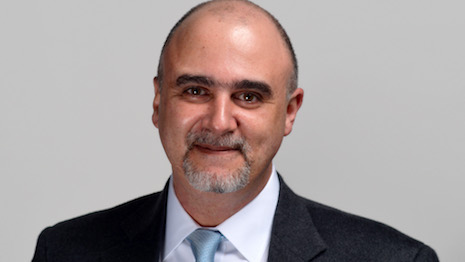 Gloss and substance: Dior U.S. homepage on desktop site. Image credit: Dior
Gloss and substance: Dior U.S. homepage on desktop site. Image credit: Dior
By Mehdi Daoudi Catchpoint’s newest analysis of site performance (speed) in the luxury ecommerce sector highlights a clear recognition of the importance of Web-based sales and, by extension, superior Web performance to fuel these sales. This includes holdouts in the so-called hard luxury sector of jewelry and watches, which, for a long time, viewed ecommerce as an after-the-fact consideration – after all, who buys a $10,000 watch without trying it on first? We have seen steady quarter-to-quarter improvements across both the desktop and mobile luxury sites that we monitor, due mostly to significant reductions in page weight. Generally, the heavier a page is in terms of content delivered – measured in megabytes – the slower the Webpage load time, which is defined as the time it takes for enough page elements to load for a user to perceive the page as ready for interaction such as clicking or scrolling. Luxury desktop sites continue to improve The top five fastest-loading desktop sites in Q4 2017 were – in this order – Dior, Porsche, Chanel, Patek Philippe and Audi. These were the same top five performers, in the same order, in Q3 2017. In Q1, the top five performers were Dior, Porsche, BMW, Chanel and Audi. BMW’s jump to third place displaced Patek Philippe in the top five, which fell just outside to land in sixth place. Dior Addict Lacquer Plump -- The Film The luxury desktop sites as a group have made great strides in speed over the past several quarters. In Q3 2017, the average Webpage load time was 3.68 seconds. That number dropped to 3.35 seconds in Q4 2017, followed by 2.89 seconds in Q1 2018. Coinciding with these improvements were sequential drops in page weight – from an average of 4MB in Q3, to 3.15MB in Q4, to 2.9MB in Q1 2018. The number of hosts and items on a Webpage also factors heavily into download speed. A host is any domain that delivers data, content or services over the Internet, often to Web sites. Modern Web sites are increasingly complex, pulling from a number of internal and external hosts that provide specialized services. Each individual host can induce wait time, so the more hosts there are, the greater the likelihood of Webpage load delays. Items, sometimes called “requests,” are page components such as files and images that a Webpage loads from internal and external hosts or domains. These can include PDFs, PNGs, JPEGs and GIFs, and a greater number of items that needs to load can also cause download speeds to slow. Interestingly, the average number of hosts and items has increased since Q3 – from 34 and 120, respectively, to 35/128 in Q4 and 35/125 in Q1. This, combined with the overall reduction in average page weights, suggests that the sites are taking special steps such as image compression to mitigate the potential negative impact and continue driving page weights down. BMW should be recognized for significant desktop site performance gains over the last several quarters. The luxury car manufacturer went from 12th place in Q3 – average Webpage load time of 3.03 seconds – to sixth place in Q4 (2.21 seconds) to third place in Q1 (1.52 seconds). Consistent with the category-wide trend, BMW slimmed down from 3.34MB in Q3, to 2.51MB in Q4, to 1.53MB in Q1. The number of items on the site almost doubled from Q3 to Q4, and then increased significantly again in Q1. When we compare the luxury desktop sites to a larger sampling of cross-vertical ecommerce sites that we measure, the luxury group, as a whole, is performing better. Our cross-vertical group had an average Webpage response time of 3.47 seconds in Q1, and while the average page weight between the two site samples was almost identical, the cross-vertical group’s average number of hosts and items in Q1 was significantly higher than the luxury group. This suggests that the larger number of hosts may be placing a drag on the cross-vertical sites. Also, in Q1, almost an identical percentage (20 percent) of sites within both groups successfully delivered on the two-seconds-or-less gold standard. Generally, there are more performance outliers – in the five-seconds-or-above range – in the cross-vertical sampling than in luxury. Not a single luxury desktop site exceeded the four-second range in Q1. Mobile sites also on a positive trajectory The top five fastest-loading mobile sites in Q4 2017 were, in this order, Dior, Porsche, Chanel, Audi and BMW. These were the same top five performers in Q1 2017, although the order changed to Porsche, BMW, Dior, Chanel and Audi. In both Q4 and Q1, BMW displaced Patek Philippe, which had been in the top five in Q3 2017. At the conclusion of Q1, Patek Philippe was just outside the top five, in sixth place.
 Always in fashion: Dior U.S. mobile site. Image credit: Dior
Always in fashion: Dior U.S. mobile site. Image credit: Dior
 Mehdi Daoudi is CEO of Catchpoint
Mehdi Daoudi is CEO of Catchpoint
